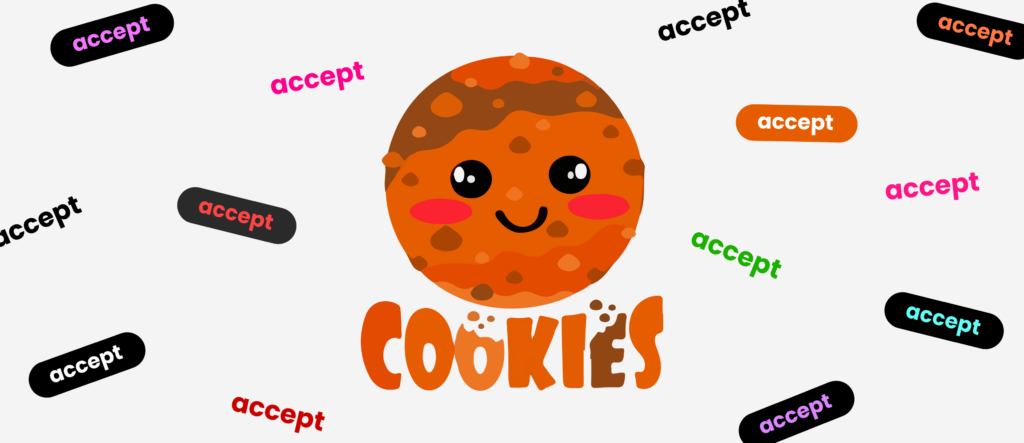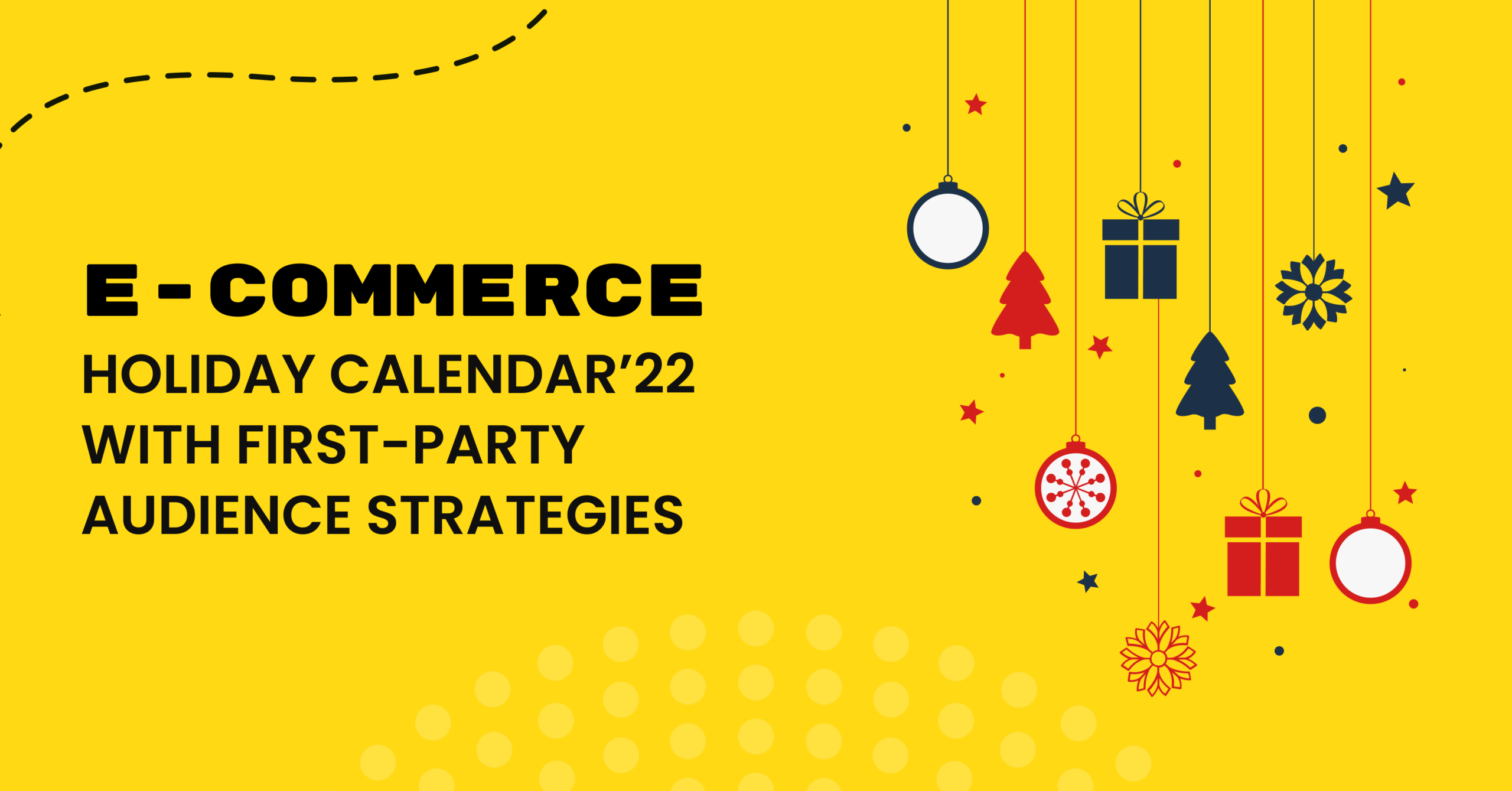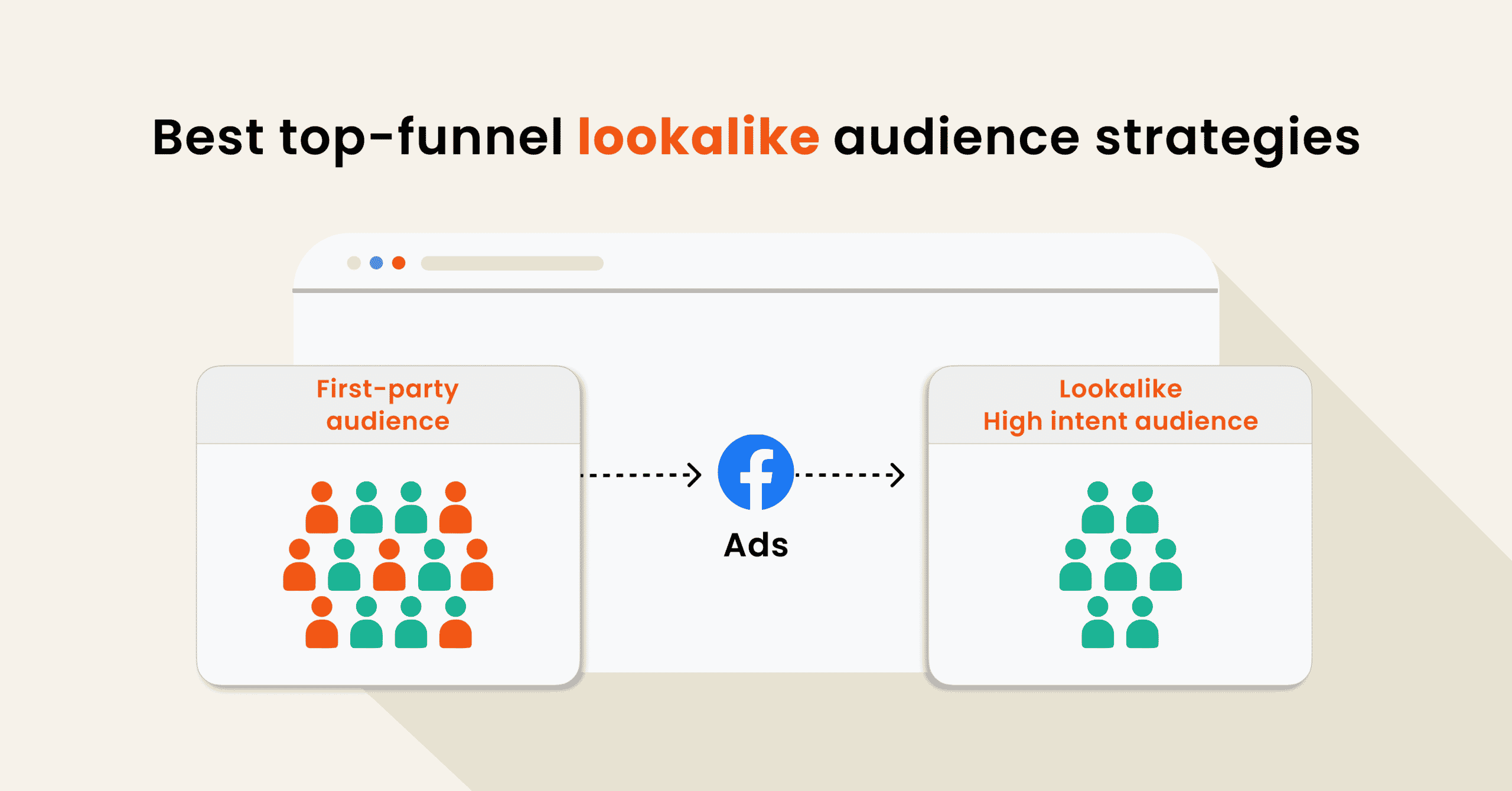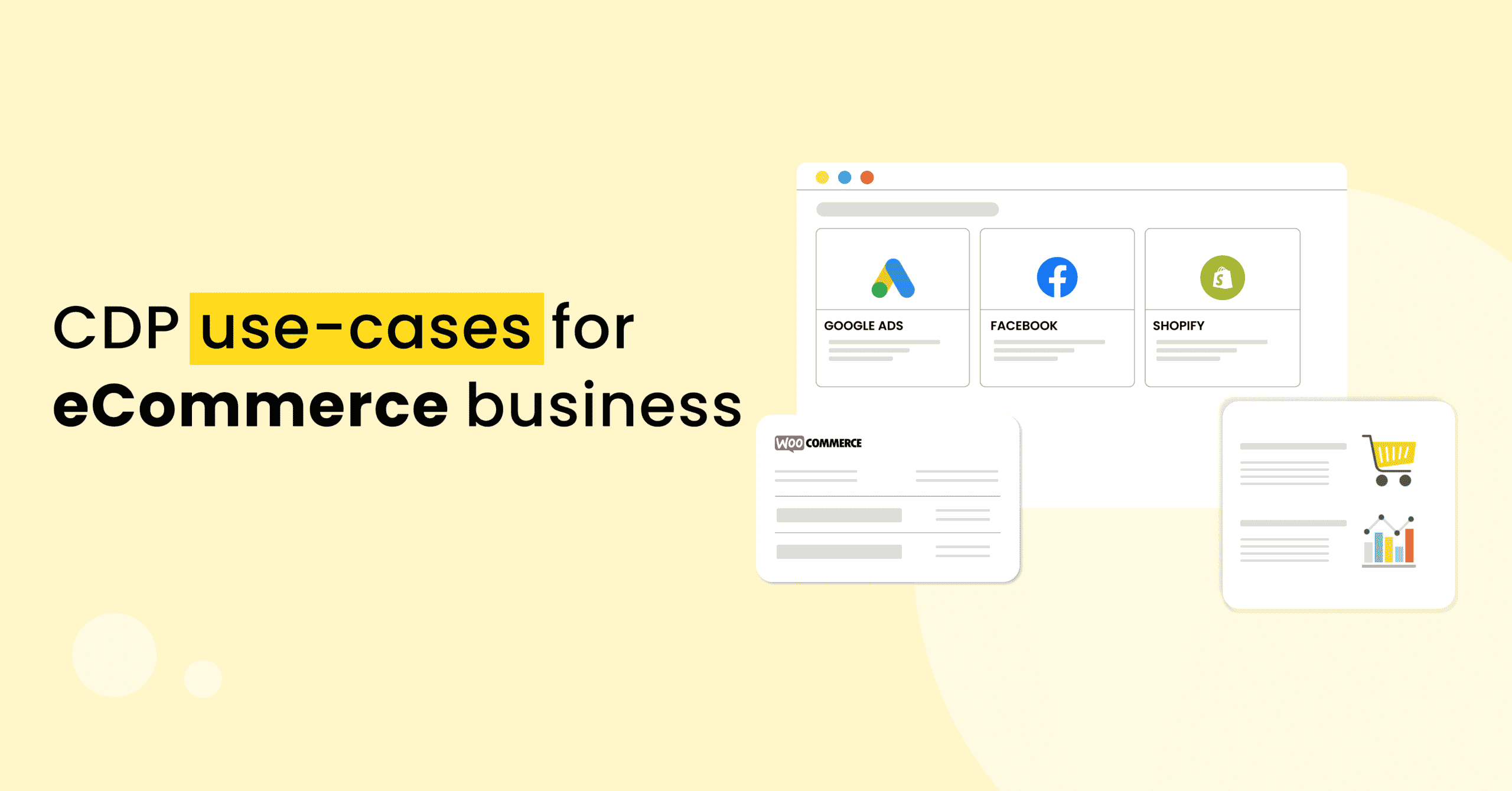It’s not a cakewalk between the customer landing on the website to the customer making the purchase decision. Purchase decisions are a lot messier, complicated, and unpredictable, every digital marketer who has been running campaigns is well aware of that.
And we also know that 80% of the users are more likely to purchase from brands that provide a personalized experience. And 72% of the users only engage with personalized messaging—report Forbes.
And marketers prefer targeted advertising to provide a personalized user experience.
What is targeted advertising?
Targeted advertising is a type of internet advertising that delivers personalized messages to a user according to their specific traits, interests, and preferences. Brands get this information by tracking user behavior on their website or other sources.
Whether we acknowledge it or not, we are constantly encountering ads from the moment we wake up every day.
By the report 2021, it was estimated that the average person saw between 6,000–10,000 advertisements daily.

What are the types of targeted advertising?
Demographic targeting: In demographically targeted ads, you can focus the audience based on the characteristics like – age, gender, nationality, job role, salary, and more.
Behavioral targeting: Behavioral targeting allows you to reach niche audiences that have already had some degree of interest in the product or content related to the product. These preferences are measured through people’s social engagements, browsing activity, and even offline purchase behavior.
With this information tracked, you can run personalized ad campaigns across platforms. You can target the audience who browsed a particular product on the website. This is nothing but Behavioral Retargeting.
Contextual targeting: Contextual targeting is nothing but the user is targeted based on the content the user is consuming on the webpage.
For example, if you are watching a cooking video – then the ads are based on the kitchen appliances or the food delivery.
Geographic targeting: Let’s say, you run a candy shop and you have more people from New York purchasing the products.
Now, by narrowing down your target locations to NewYork and other relevant locations, you can ensure that your brand is reaching a relevant pool of people
Can marketers run targeted advertising like they used to?
We have seen the whole advertising ecosystem change from the levels of data collection to running ads.
We had GDPR and privacy laws that restricted advertisers from collecting user behavior data without the user’s consent.
Following up, we had the famous Apple’s iOS’14+ update which literally shook the advertising platforms and had a direct impact on their ad platforms,
🥺 Poor custom audience match rates
🤯 Drop in the ROAS
😰 CPMs cost high
Adding to this, Ad platforms have drastically started using AI and Machine Learning algorithms. These changes have snatched the control from marketers and advertisers.
But this does not end here – “See what’s cooking”
By 2025, Google announced, phasing out third-party cookies from chrome. And we also have other privacy-related legal laws coming into effect, like,
📌 Chrome phasing out third-party cookie tracking in a year.
📌 Virginia Consumer Data Protection act
📌 California Privacy Act
📌 Colorado Privacy Act
Now, when marketers want to run any type of targeted advertising, is it possible in this evolved privacy-protected digital environment? Let’s take Meta (Facebook and Instagram) as an example.
How has Meta changed after the privacy update?
Meta has shown some huge impacts since privacy law changes and Apple’s iOS 14+ update. Meta is the biggest advertising platform for all industries when it comes to digital marketing. Meta had access to all the user behavior data and was one of the biggest data collectors on the internet.
Now, targeting is severely limited. Because of Apple’s iOS update and other privacy laws, users can simply opt-out of Facebook’s tracking. And also, Facebook itself has also limited targeting options that can have ethical concerns.
In the longer run, it will be difficult for Facebook to target the right audience on the top funnel campaigns as well – because of insufficient user behavior data.
Read here to understand the changes in the Facebook algorithm and its impact on top-funnel campaigns.
Especially after the launch of Meta Advantage+ Shopping Campaigns, Meta’s AI has been going left, right and centre to find audience in a broad fashion. Most marketers also complain of Meta ASC+ not working for them. The reason being lack of ‘good data’
A real-life example: Facebook custom audience match rate got us a mere heart attack
In the real world of Facebook advertising, when we create a custom audience for a segment of the audience, the audience match rate on Facebook is really low.
Here is a quick example of how Meta’s (formerly Facebook) custom audience match rate operates.
Out of the total custom audience data you shared with Meta, from the total audience size of 2 Million, Facebook could match only 25% of its audience.
From the above example, we can see that for small-medium businesses, the impact is going to be even worse.
The impact on small-medium businesses is even bigger
In the recent update, the Meta ads manager has added additional suggested optimization tips for the advertisers.
When the audience size is too small to generate results, you will now see an actual recommended number.
In this scenario, it is recommended and expected that there is bigger audience size.
If this is the case, running ad campaigns for niche-personalized segments for small-medium businesses would be difficult.
This is the overall impact on the advertisers after the privacy updates.
For personalized targeting in the cookieless world – First-party data is the only solution
Having known all the concerns in the advertising world around privacy, relying on third-party cookie tracking is unusable or worthless. The only solution is to start collecting your own user behavior data i.e., first-party data on the server-side using 1P domain tracking.
By which advertisers will have full control over the user behavior data without any retention and restriction fear.
Targeted Advertising Strategies powered by First-Party Audience
Rather than approaching the audience in a wide spectrum like “all website visitors”, you can target the audience by splitting them into funnels.
You can create audience segments for the MOFU and BOFU for personalized engagement.
Why do mid-funnel targeted advertising?
The superpotential buyers like the users who added to a cart, wish list a few items, or browsed on many products and left the website – reside in the mid-funnel.
And almost 70% of these potential prospects are stuck in the mid-funnel which can be nurtured and pushed to the bottom funnel.
Activating these mid-funnel audiences by segmenting them based on their behavior and engaging in various ad platforms will help the buyer make the decision.
Strategies to activate the mid-funnel
🚩 Users who added to the cart but not purchased in the last 90days
🚩 Users who have items on the wishlist but not added to the cart in the 60 days
🚩 Users who have purchased top-wear in the last 30 days (cross-sell tactics)
🚩 Users who have visited the website and viewed products more than 5 times in the last 4months
🚩 Segment the users based on the category/product pages visited and retarget them with those items
Check out how smartly you can micro-segment the audience using first-party data to drive double sales and revenue.
Strategies to activate the bottom funnel
🚩 Added_to_cart_not purchased in last 7days
🚩 Added_to_cart_before 30days
🚩 Product wishlisted for more than 7 days
By creating these personalized audience segments, you can activate these audience segments on Facebook and Google.
This first-party audience makes it easy for the ad platforms to reach the right and targeted audience by improving the audience match rate to double the ROAS.
First-Party Audience Strategies – A Success Story
India’s leading fashion brand W for Woman implemented the first-party audience strategies and activated the mid-funnel audience by targeted advertising.
They saw:
🚩 Improved Facebook custom audience match rate from 25% to beyond 80%
Note: Using first-party data, from the total audience size of 2 Million, Facebook could match beyond 80%
🚩 Increased ROAS from 2 to 3.5X
🚩 Reduced the cost per purchase by 35%.
Read to know more – Case Study of W for Woman
Do you ask permission before you collect first-party data?
Before collecting the user behavior data, the advertisers need to take consent from the users. By GDPR, the consent requires to be:
📌 Freely given – The users must not be coerced into giving consent. Consent must be given freely as a voluntary action by the user.
📌 Informed – The user has to be informed about what will be going on with the personal data when you give consent. Businesses communicate this information through their privacy policies.
However, having one is not enough. The website should provide a link to the policy at the moment of collection, i.e., at the moment of consent request for the use of cookies.
📌 Specific – Businesses must obtain separate consent for every single processing purpose.
The business that tracks website analytics and uses advertising cookies must ask for consent for each purpose separately. One bundled consent doesn’t count.
📌 Unambiguous – Every cookie banner should have an option to click on an ACCEPT button but also a button to refuse cookies. In some cases, businesses may offer the opportunity to reject cookies in the cookie preferences center if they have one.
📌 Easily withdrawn – The business must allow you to withdraw the consent as easily as you have given it.
It is important to note again the withdrawal should not be imposed by any negative consequences unless the cookies are necessary for providing some features.
All these five requirements must be met for lawful consent.

Benefits of target advertising using the First-party audience:
🎯 Personalisation: With the first-party data collected, which is both the known and anonymous website visitors’ data, you can run personalized audience segments for the niche audiences based on the behavior, traits, preferences, engagement, etc.
🎯 Target the right audience: First-party data is rich user behavior information. Advertising platforms like Facebook, and Adwords, can target the right audience as we have rich user behavior data.
🎯 Complaint to privacy laws: All this major shift to first-party audiences is that advertisers need to be privacy compliant and should have user consent before using their information.
By using first-party data, you are completely abided and compliant with privacy laws.
To know more about the first-party data strategies for 2024, read the blog – “Navigating 2024 With First-Party Data“
Take away
The power of first-party audience is the changing world of privacy is inevitable.
Privacy laws like Colorado Privacy Act (CPA), California Privacy Rights Act (CPRA), and Virginia Consumer Data Protection Act (VCDPA) to tighten the policies. Similar to Apple, Google also has the plans to stop third-party cookie tracking completely in late 2023.
Having said that, the only solution is, marketers need to feed the advertising platforms like Google and Facebook with the rich first-party data and train the algorithm about the audience patterns.
Start collecting first-party data and run personalised targeted advertising. Let us know if you need any assistance, we will be happy to connect you with the first-party audience expert.






